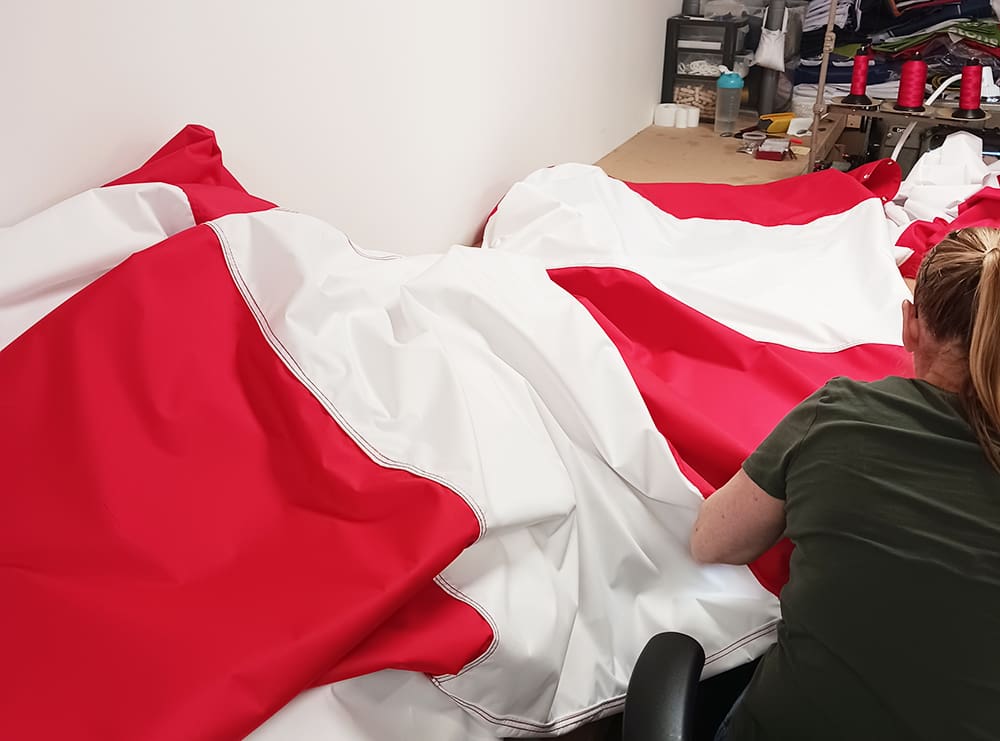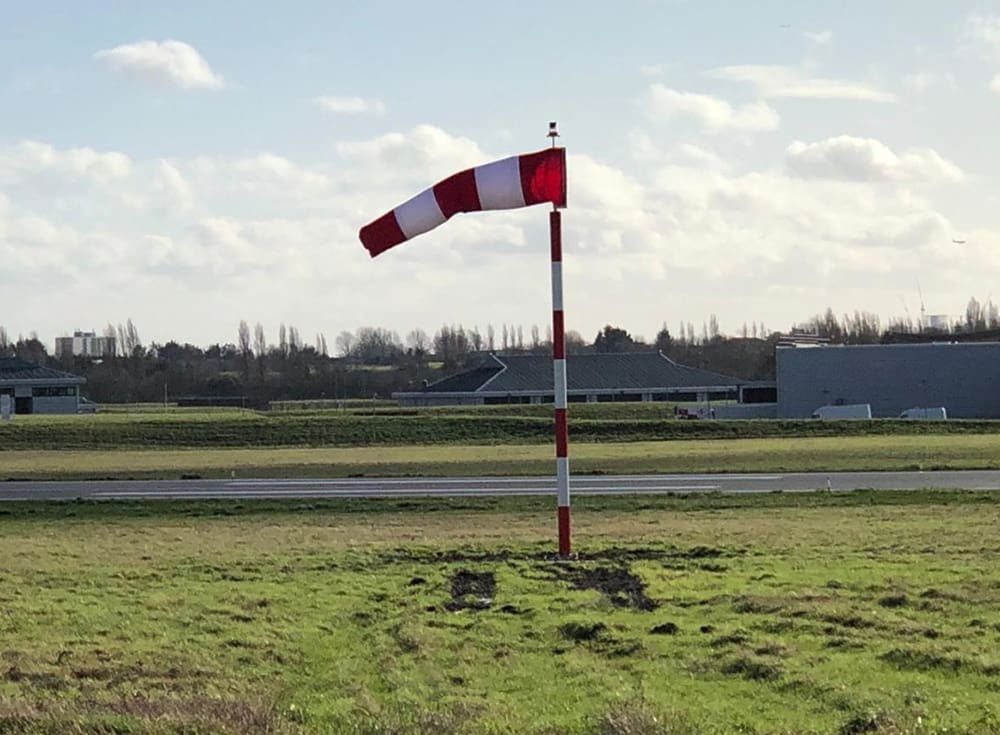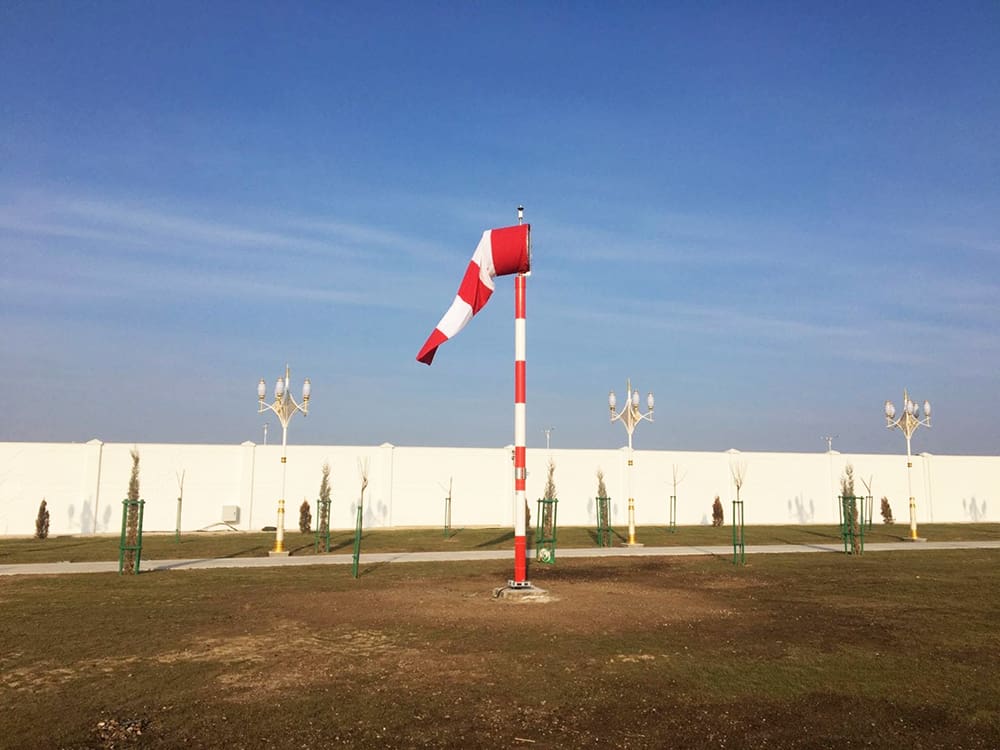Windsocks are simple, conical textile tubes used to indicate the direction and approximate speed of the wind. They are typically placed at airports, helipads, and other locations. They are often mounted on poles or masts and can vary in size depending on the required application. The windsock’s orientation and movement provide valuable information to pilots, air traffic controllers, and ground personnel. This helps them to make informed decisions regarding aircraft operations and safety.
About our windsocks
All our windsocks are manufactured at our facility in the North East of England, from high quality 195gsm knitted polyester. They are designed to meet ICAO, FAA and CAA requirements for size, material and colour. Our materials are tested and treated against UV fading, moisture degradation and harsh conditions.
Client specific colours can be provided and all colours used are designed to give maximum contrast with their background.

About our windsock masts
The masts that windsocks are mounted on are subject to regulatory compliance. All Pollite Windsock masts are frangible, designed for long life and easy installation. Our windsock masts are manufactured from fiberglass and polyester resin, and finished with a UV resistant gel coat. Each pole has a unique break system incorporated within the main mast and can be coloured to meet ICAO/FAA specifications.
All our airfield and heliport windsock masts are compliant with CAA’s CAP168, ICAO’s Annex 14 Vol. 1 Aerodrome Design and Operations and ICAO Annex 14 Vol II Heliports requirements. They comply fully with the frangibility requirements stipulated in ICAO’s Aerodrome Design Manual, pt. 6 frangibility and FAA AC 150/5345-27D.

The importance of windsocks in aviation
Wind direction indication
Windsocks respond to wind direction. By observing the windsock’s orientation, pilots and air traffic controllers can determine the direction from which the wind is blowing. This is crucial information for takeoffs, landings, and taxiing manoeuvres.
Approximate wind speed
Windsocks do not provide precise wind speed measurements. However their movement and degree of inflation can give a general indication of wind intensity. Pilots use this information to assess crosswind components and adjust their approach and landing techniques accordingly.
Safety during aircraft operations
Wind conditions significantly affect aircraft performance and handling characteristics. Windsocks help pilots gauge wind conditions on the ground. They can then make informed decisions to ensure safe operations during critical phases of flight.
Decision support for pilots
Windsocks provide pilots with real-time information about wind conditions at the airfield. This allows them to select the most suitable runway, approach path, and departure route based on wind direction and intensity. Aircraft performance is then optimised and the risk of incidents or accidents minimised.
Ground operations and safety
Windsocks also benefit ground personnel, such as airport maintenance crews. By understanding wind conditions, ground operations can be coordinated more effectively. This reduces the risk of damage to aircraft, equipment, and infrastructure.
Emergency response
In emergency situations, such as aircraft diversions or unplanned landings, windsocks provide critical information to pilots. This helps them select appropriate landing directions and approaches based on wind conditions. This supports safe and efficient emergency response operations.
Compliance with regulations
Aviation authorities, such as the FAA (in the United States) and the ICAO (internationally), mandate the use of windsocks at airports and helipads. The regulations are in place to enhance safety and operational efficiency.

Windsocks serve as essential tools for assessing wind conditions. They ensure safe aircraft operations, and support decision-making by pilots, air traffic controllers, and ground personnel alike. Their simplicity, reliability, and visibility make them indispensable components of aviation infrastructure worldwide.
To discuss your windsock and frangible mast requirements, contact us.